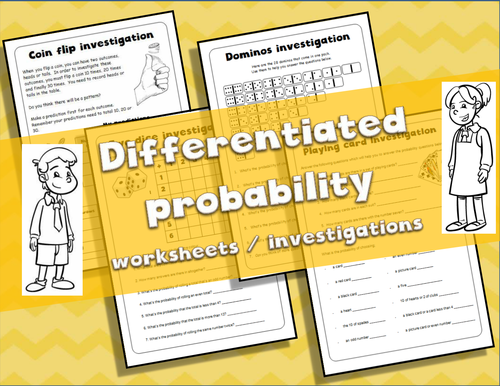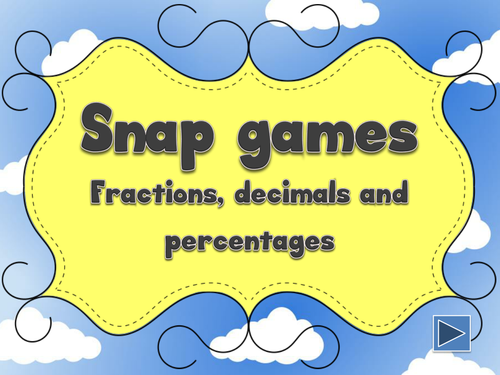
40Uploads
41k+Views
27k+Downloads
Maths for early years

Numbers posters 1 - 20 - Display
Numbers posters ready to print and laminate.
Each containing the word, coin representation (least number of coins), the number itself, numicon representation and hands/fingers representation.

Class clock display for KS2
Pimp up your class clock with this display that turns it into a teaching resource.
You have a choice of 24 hour clock or minutes.

Numicon bingo game 1 - 6, numicon bingo 5 - 10 and numicon picture cards
This is a great way to introduce and learn numicon values by playing 1-6 bingo or 5 - 10 bingo. You can differentiate by using both.
The picture cards are for one to one matching, actual numicon sizes. A perfect activity to compliment shape and colour recognition.
Numicon bingo is on the White Rose maths hub scheme for

Times tables display
I have created these to use in my class next year and am so pleased with how they’ve turned out. I have only created them to 10x.
I have included a Powerpoint presentation to learn the 2x times table and black and white copies that you can use on worksheets.
I hope you enjoy too.

4 Differentiated probability worksheets / investigations
I’ve used these very successfully with year 5 to introduce a practical application to probability. I recommend that you use coins, dice, dominos and playing cards during the lessons but they can be used just as easily without. You may also have a large dice, dominos or playing cards that you can use to introduce the 4 lessons, or to use with lower abilities.
The tasks in order of complexity are;
• Coin toss investigation,
• Dice roll investigation,
• Dominos investigation and
• Playing cards investigation.

Road numbers for number tracing with a toy car
These race car numbers can be used in a variety of ways. They can be used as a wall display (or other display), they can be an arranging task, they can be used as an activity for ‘driving’ a toy car around the shape correctly or can be traced.
The boys particularly liked these when introducing numbers to the class.
The clip art images can be inserted into any worksheet of your own creation too.
I have created these because the ones I’ve found have the incorrect formation for 4, 5 and 9.
I have used these digits (without the lines) for these resources too;
https://www.tes.com/teaching-resource/number-fans-and-also-numicon-dice-2d-shapes-3d-shapes-coins-and-fractions-11961251
https://www.tes.com/teaching-resource/numbers-posters-1-20-display-11961553

Introduction to the language of probability quiz
Fun game / presentation to introduce the language of probability.
It uses the terms; Impossible, Very unlikely, Unlikely, Even chance, Likely, Very likely and Certain.
There is a brief introduction and these slides can be removed if you wish, including rules of the game.
The board has 12 interactive questions where pupils click on their choice before the question is revealed. There are 7 possible answers to each question. Clicking the wrong answer will make the answer shake to indicate that it is wrong. When a correct answer is chosen, it will take you back to the question board.
You can keep a record of the scores when the presentation is active by typing them in yourself on the question screen. It is also possible to name the teams in the same way.

Algebra picture puzzles introduction - powerpoints and worksheets KS2
Introduce Algebra at Primary / Secondary with these 22 ppts and 12 worksheets (9 of which are editable).
The 22 presentations begin with simple picture representations and explore pupil’s reasoning skills through a variety of sized and shaped grids, representations of scales as equal and scales as amounts to reasonably compare.
Most numbers can be edited on the powerpoints and blank worksheets are provided for extra differentiation (if necessary).
A lovely introduction to Algebra in the new Curriculum for Wales (CfW).

Reading scales, an easier introduction
Finding missing numbers on scales can be a real challenge for some. Finding the difference before calculating half and adding this to the initial number is as confusing to some as it sounds! The easier introduction is developing these skills one step at a time, by starting with 0. These two step worksheets, with simple PowerPoint introduction, will ensure more of the class will achieve.

Whiteboard practice PowerPoints, 1000 number bonds, Big Maths CLIC session
4 PowerPoints to use alongside the Big Maths clic sessions. I also use them as whiteboard sessions at the beginning of Maths lessons. They get progressively harder from the first to last, breaking the tens barrier twice by the end.
There are 4 pages to each PowerPoint which I have been using in year 4, but are suitable for other ages.

Whiteboard practice PowerPoints, 100 number bonds, Mr 100
Here is my strategy for teaching 100 number bonds. It is similar to the Big Maths clic session jigsaw addition. There are 4 PowerPoints, getting harder each time. The children love it and find it an easy strategy to follow.
I have included my differentiated worksheet too.

Fact family triangles and worksheets
10 sets of fact family triangles (tables 2 – 10).
12 fact family worksheets (tables 2 – 12).

Differentiated money worksheets
8 differentiated money worksheets created for year 4. This includes;
• Adding money by counting repeating coins,
• Adding money ordered largest to smallest,
• Adding money in random orders,
• Adding decimals (column method),
• Reasoning skills from a menu (following pictures),
• Adding two 2 digit numbers,
• Finding change from £1, £2, £5 and/or £10,
• Money word problems (not differentiated but gets harder).
There is a differentiated ‘First to spend £10’ game and a laminate to use with lower abilities (to use a whiteboard pen).

Year 3/4 Mathematics reasoning investigations, focusing on re-ordering / rearranging
Mathematical reasoning has been brought into focus with the poor results of the PISA tests. These 5 investigations focus on re-ordering work with emphasis on a given set of options.
They are ultimately suited to year 3 but without prior investigation work, I’ve used these successfully in my year 4 class. I would advise using equipment/resources to spark interest in the task.
Each investigation has an extension which is a level above the problem for those children who are capable learners already. This assists classroom management, where high achievers can be disengaged when problems seem obvious to them.
There is also vocabulary specific to re-ordering work, to assist the teacher in promoting the language and therefore facilitate progress.

Halving diamond, partitioning and halving 2 digit numbers PowerPoints
4 PowerPoints to use alongside the Big Maths clic sessions. I also use them as whiteboard sessions at the beginning of Maths lessons. They get progressively harder from the first to last, ending up introducing decimals.
There are 5 pages to each PowerPoint which are suitable for year 1/2 upwards.

Doubling diamond, partitioning and doubling 2 digit numbers PowerPoints
4 PowerPoints to use alongside the Big Maths clic sessions. I also use them as whiteboard sessions at the beginning of Maths lessons. They get progressively harder from the first to last, breaking the tens barrier twice by the end.
There are 5 pages to each PowerPoint which are suitable for year 1 upwards (or consolidating / introducing to older years).

FUN colouring division with remainders, times tables 2-10
9 colouring sheets for fun differentiated times table practice. Answers are included as are times tables cards for LA.
Pupils need to calculate the remainders for each number, follow the key at the foot of the page and colour the boxes accordingly. Pupils guess the picture at the end.

Fractions, decimals and percentages - fun interactive white board games
6 enjoyable snap games focusing on two elements at a time e.g. fractions to decimals, starting with easier matches e.g. ½ and 0.5 and increasing in complexity.
The first three games are targeted for level 4 (big maths too) and the last three are level 5 questions.
The pupils click on two choices, which are then revealed. If they are incorrect, they need to reset the board. If they are correct, they may continue until they match two incorrect tiles. The game needs instruction initially, as with the limits of PowerPoint, it will not say if the matches are correct or not.
They can be used as a fun introduction, plenary or independent games. The games will work on an iPad that has PowerPoint. The game can be sent to the iPad as an email attachment or through Dropbox / Google Drive and opened with PowerPoint.
There is one larger version with sound and a smaller version without. Both have the same questions.

Wall clock in Welsh, Cloc CA2 barod i lamyneiddio
Arddangosfa cloc am eich dosbarth. Addurnwch eich cloc ddiflas fel ei fod yn adnodd ar gyfer gwersi Mathemateg.
Barod i lamyneiddio a gosod fel y llun.

Mastery Weekly interactive Mathematics Powerpoints – Reception, counting, number recognition, double
I created these because I had no resources and they turned out to be amazing! They proved so successful with the children and the two other Reception teachers; I continued to produce them for the rest of the year. Worksheets, matching games etc. are included.
The next 5 PowerPoints are for sale here https://www.tes.com/teaching-resource/5-weeks-mastery-interactive-mathematics-powerpoints-and-resources-reception-weeks-2-6-11965274
I use each presentation at least 3 if not 4 times a week prior to Maths session. The children are chosen to come to the whiteboard for most of the PowerPoint pages e.g. to pop the bubbles whilst counting down from 10, which they love (better listening skills on the carpet).
The PowerPoints start from scratch. Unfortunately, the difference between the highest achiever and lowest at Reception can be enormous and my philosophy is ‘no one left behind’. They change pace quickly and certain aspects such as the ‘doubling bunny’ rely on repetition and learning ‘the action’ (children physically perform it) so that they can say the answers before tackling the maths later on in the year.
Each lesson begins with:
Shape discussion (click the shape to make it dance),
Counting upwards (from the number of the week),
Counting from 10 to zero (clicking on the images so that they disappear one by one).
Different concepts are then added each time.
I have created these PowerPoints to satisfy:
• Maths mastery,
• Little Big Maths,
• The Welsh foundation phase curriculum (it also satisfies the English eyfs curriculum),
• Individual profiles (Reception),
• It introduces the part part whole aspect of Singapore Maths and also the bar method,
• It also utilises ideas from the White Rose Maths.
Week one is free so that you can see how this works in your class. The rest are in half termly packs.
Week 1 PowerPoint is arranged as follows:
Page 1 : Cover page – shapes to discuss (triangle, square, rectangle and circle)
Page 2 : Counting to 10 (1 to 10)
Page 3 : Counting down from 10 to 0 (balloon pop)
Page 4 : Reading numbers 0 to 5
Page 5 : Writing numbers in the air (1 to 5)
Page 6 : Counting coins 1 to 5
Page 7 : Doubling bunny 1 + 1, 2 + 2
Page 8 : Adding basics (how to make 2)
Page 9 : Comparing numbers to 4 objects




















